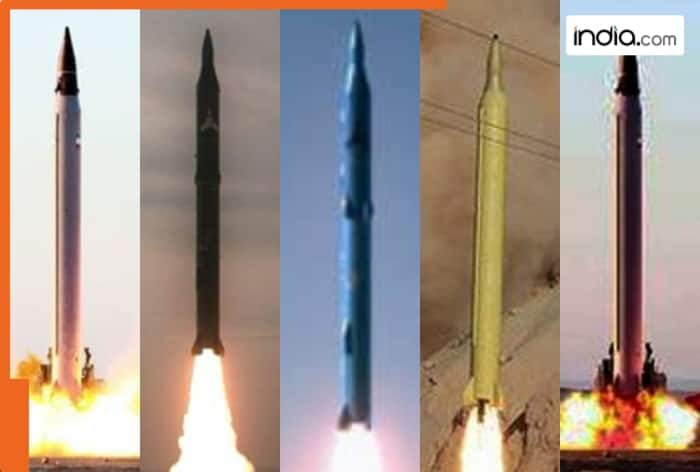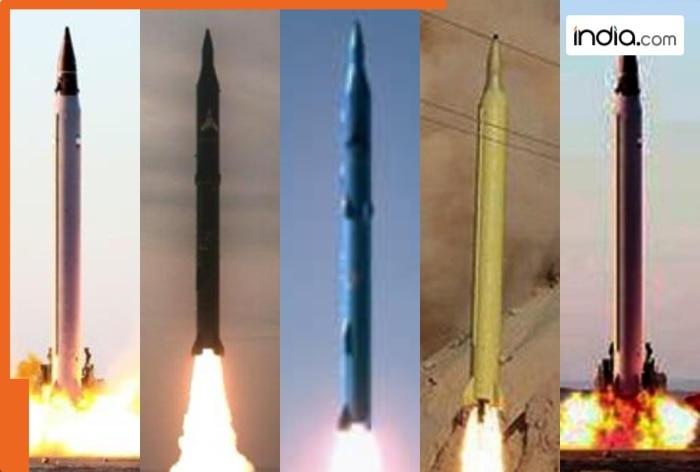Iran also has hypersonic missiles in its stockpile.

New Delhi: Iran has said that it will definitely take revenge from Israel and at its missiles can rain on “Benjamin Netanyahu’s country” any time. In fact, Iran’s Supreme Leader Ayatollah Ali Khamenei has threatened Israel and the US of giving a “befitting response” to the attacks on Iran and its allies. Ever since, the whole world is waiting anxiously for Iran’s next move.
Amidst all this, the whole world is wondering what missiles and drones iran will use this time. It is reported that the Persian state has a huge stockpile of various ballistic and cruise missiles which are said to number in thousands with varying ranges.
This information has been given in the report of the Missile Threat Project of the Center for Strategic and International Studies. Although the exact number of each type of missile is not known, US Air Force General Kenneth McKenzie told the country’s parliament in 2023 that Iran has “more than 3000” ballistic missiles. This information was reported on the Iran Watch website this year by the Wisconsin Project on Nuclear Arms Control.
Iranian news agency ISNA published a graphic in April this year, showing nine Iranian missiles, which they said could reach Israel. These include “Sejjil”, which can fly at speeds in excess of 17,000 kmph (10,500 mph) and has a range of 2,500 km (1,550 miles). Similarly, “Kheiber” has a range of 2,000 km (1,240 miles), while “Haj Qasem” missile has a range of 1,400 km (870 miles).
According to the Washington-based non-governmental organization Arms Control Association, Iran’s ballistic missiles include “Shahab-1”, which has a range of 300 km (190 miles); “Zolfaghar” has a range of 700 km (435 mi); “Shahab-3” has a range of 800–1000 km (500 to 620 mi); the Emad 1, which Iran is building, has a range of 2,000 km (1,240 miles).
According to a CNN report, when Iran fired more than 150 missiles on Israel on October 1, only Shahab-3 ballistic missiles were used in them. The trajectory of ballistic missiles takes them outside or near the Earth’s atmosphere. After this, the warhead payload separates from the rocket that lifted it up and then it re-enters the atmosphere and hits its target.
Fabian Hinz, a Berlin-based Iranian missile expert and a member of the International Institute for Strategic Studies, said that based on the location of the video of the launch on social media and the distance to Israel, they had calculated that on 1 October, Iran fired a combination of missiles with solid and liquid fuel.
In addition to these ballistic missiles, Iran now has hypersonic missiles in its stockpile. According to Iranian media IRNA, Tehran developed its first hypersonic ballistic missile “Fatah-1” in June 2023, which means that it travels towards its target at five times the speed of sound, i.e. about 3,800 miles per hour (6,100 kilometers per hour). Interestingly, this missile also has the capability to dodge air defense systems.
Similarly, “Fatah-2” is equipped with a hypersonic glide vehicle (HGV) warhead which gives the missile the power to maneuver and glide at the speed of sound (MACH) 5 to 20. The range of Fatah-2 is 1,500 km, which is slightly higher than Fatah-1.
West Asia is already embroiled in a fierce armed conflict, amidst this, if Israel or Iran initiate another martial strike, then not only the entire region might plunge into deep chaos but has the potential to pit the USA and Russia against each other.

